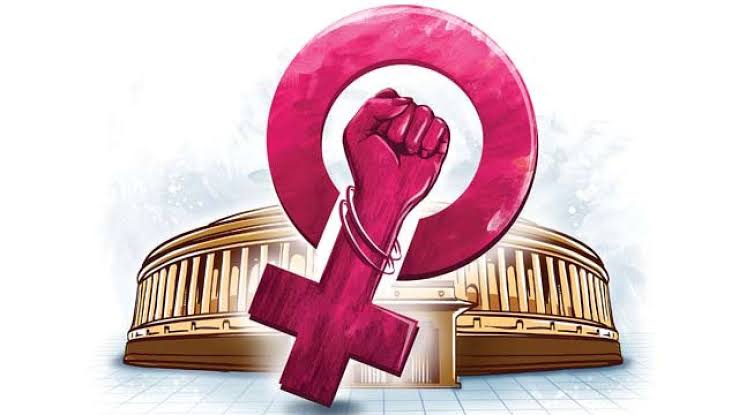Indecent Representation of Women in India – Laws and Cases

Author: DIKSHA RANI , a Student of PRESIDENCY UNIVERSITY
ABSTRACT
The issue of indecent representation of women in India reflects deeply ingrained social constraints and gender discrimination, perpetuating harmful stereotypes and marginalizing women. Despite progress toward gender equality, offensive portrayals of women persist in media, advertising, and societal customs. The Indecent Representation of Women (Prohibition) Act, 1986, was enacted to address this issue, giving power to designated officials to enter and search premises, seize prohibited materials, and impose penalties for violations. The Indecent Representation of Women Act strives to combat offensive portrayals, but its impact depends on practical enforcement and societal consciousness. There are various key provisions in the act which include Section 2(c), Section 5, Section 6, Section 9, and Section 10. The Indecent Representation of Women Act serves as a critical safeguard against the denigration of women in media and society. Concerted efforts in education, media literacy, and cultural awareness are essential to promote respectful and equitable representations of women in Indian society, aligning with the Act’s objectives and fostering a more inclusive and dignified environment for women.
Keywords- Indecent, Gender, Discrimination, Equality, Environment, Society.
INTRODUCTION
Jawaharlal Nehru said- You can tell the condition of a nation by looking at the status of its women.
The persistent issue of indecent representation of women in India is a result of deeply rooted social constraints and discrimination based on gender. These representations not only reinforce harmful stereotypes but also objectify and marginalize women in society. India has made significant progress towards gender equality but still faces challenges from the persistently offensive portrayal of women in the media, in society, and customs. Women’s dignity is undermined, inequality persists, and regressive gender norms are strengthened when they are portrayed adversely or as objects.
The Indecent Representation of Women (Prohibition) Act, 1986, is one of the main legislation used to curb indecent representation of women in India. The bill was introduced in Rajya Sabha by Margaret Alva and became law in the year 1987 by an enactment.
Obscene representations of women in publications are becoming more common, especially in advertising. In addition to being disrespectful to women, this denigrates them. These magazines, advertisements, and similar things have a corrupting or depraving effect, even though they might not be intentional. Therefore, regulations are needed to successfully regulate the ambiguous image of women in advertisements, publications, pamphlets, and other media.
The purpose of this act is to outlaw derogatory portrayals of women in writing, publications, artworks, novels, ads, and other media. It intends to punish individuals who portray women in a way that could lead to the corruption or depravity of those who are likely to be exposed to such images, words, or sounds. Under the provisions of the Act, it is against the law to objectify or degrade women in a way that undervalues them and perpetuates stereotypes. The Act prohibits the public display of pornographic images by enforcing severe penalties for violations, including fines and imprisonment. The act aims to control and outlaw how women are represented and portrayed in the media, especially print media.
SOME IMPORTANT PROVISIONS-
Section 2(c) of the act defines the term Indecent Representation- It says that any conduct that can be construed as demeaning or disrespectful to women, or as implying that they are immoral, corrupt, or susceptible to public morals, is considered “indecent representation of women.
Section 5 of the Indecent Representation of Women Act, 1986, authorizes any official person authorized by the State Government, subject to certain limitations, to enter and search any premises within the designated zone. When there is a reasonable suspicion that an Act violation has occurred or is going to occur, this officer is authorized to search the area at reasonable times with the necessary documentation. They have the right to seize any book, pamphlet, advertisement, or other items that are prohibited by the Act. Moreover, they are entitled to search and seize any documents or records found during the search if there is a reasonable suspicion that they include evidence of an Act-covered offense.
Section 6 of the act provides for penalties- Anyone found to have violated the terms of the act is liable to imprisonment and a fine. The maximum punishment he may face for a first conviction would be two years in prison and a fine of up to two thousand rupees.
If found guilty for the second time, the punishment may be as high as one lakh rupees in addition to a minimum of five years in prison and a fine of 10,000 rupees.
Section 9 of the Indecent Representation of Women Act, 1986 provides for the protection of any action taken in good faith, it states that the Central Government, any central government officer, or any other State government official shall not be liable against any action, prosecution, or other legal proceedings for anything done or intended in good faith by this Act.
The Indecent Representation of Women Act of 1986, Section 10, states that the Central Government may enact regulations by publishing a notice in the official gazette. These regulations may specifically address any or all of the following issues, without affecting the generality of the prior effect: how to seize advertisements or other objects; how to gather and provide the seizure list to the individual from whom any advertisements or other items were taken; and any other topic that may or may not require a written authorization.
JUDICIAL PRONOUNCEMENTS-
In the case of Bobby Art International v. Om Pal Singh, The case was mainly initiated to ban the movie name Bandit Queen. The movie was given an A certificate and it was concluded that it insults women by showing them pornographic images. Supreme Court while dealing with the case upheld Article 19(1)(a) of the constitution which talks about Freedom of speech and expression through cinematography. The court refused to ban the movie under obscenity.
In the case of Maqbool Fida Hussain v. Raj Kumar Pandey, the appeal was brought by various private complaints filed in various parts of India that were against the painter Maqbool Fida Hussain and one of his paintings which was titled Bharat Mata and it was advertised in an online charity auction for earthquake victims. However, the apex court held that the painting was a work of art.
In the case of Ranjeet Udeshi v. State of Maharashtra, the case was about a group of people who owned a bookstall in Bombay. The bookstall owners were accused of selling an unexpurgated version of Lady Chatterjee Lover which was deemed obscene by the magistrate under Section 292 of IPC. The accused appealed in the Supreme Court challenging that Section 292 is in violation of Article 19 of the constitution and that the book was not obscene at all. The accused also appealed that the prosecution must prove the seller’s knowledge of obscenity however the court clarified that section 292 does not require knowledge making the offense stricter. Concerning obscenity, the court stated that the art involving sex and nudity is not necessarily obscene. The court mentioned that if art outweighs obscenity or if obscenity is trivial then it can be overlooked. Supreme Court used the Hicklin test which examines whether the matter tends to deprave and corrupt those whose minds are open to such immoral influences and into whose hands publication might fall. The Hicklin test was laid by the Queen’s bench in Regina v. Hicklin. It considers the material provided out of context and it judges based on the apparent influences of the concerned material on the most susceptible reader.
In the case of Aveek Sarkar v. State of West Bengal, the article along with the picture was published in an Indian magazine Sports World, and a Kolkata-based newspaper Anandbazar Patrika. Aveek Sarkar a lawyer filed a case against the publisher, editor, and printer of the newspaper under Section 292 of IPC and stated that it would corrupt and deprave the minds of the young and were against cultural and moral values of the society. The magistrate issued the process against the accused and put them on trial for the offense punishable under Section 292. The accused then appealed before the High Court of Calcutta to quash the proceeding however the court refused. Then an appeal was preferred before the Supreme Court. The Supreme Court found the appellant innocent of the charges levied against them. The court used the Community Standard Test based on available legal jurisprudence in Canada and the USA to ascertain whether a particular material is obscene or not. The test says that the art or any gesture or content is obscene only if the theme is taken as a whole and is opposed to the contemporary standard community.
CONCLUSION
The law is aimed to protect women’s morals and reputation but how well it is carried out will be determined by how effective it is. Officers have the power to remove posters with derogatory representations of women to enforce the Indecent Representation of Women (Prohibition) Act, 1986. Its efficacy depends on effective enforcement mechanisms and societal awareness. While the law empowers officers to remove derogatory representations, its implementation and interpretation remain critical. Public consciousness and vigilance are essential in challenging regressive norms and fostering a culture of respect and equality for women. Through concerted efforts, India can aspire to create an inclusive society where women’s rights and dignity are unequivocally upheld, transcending the confines of indecent representation.




